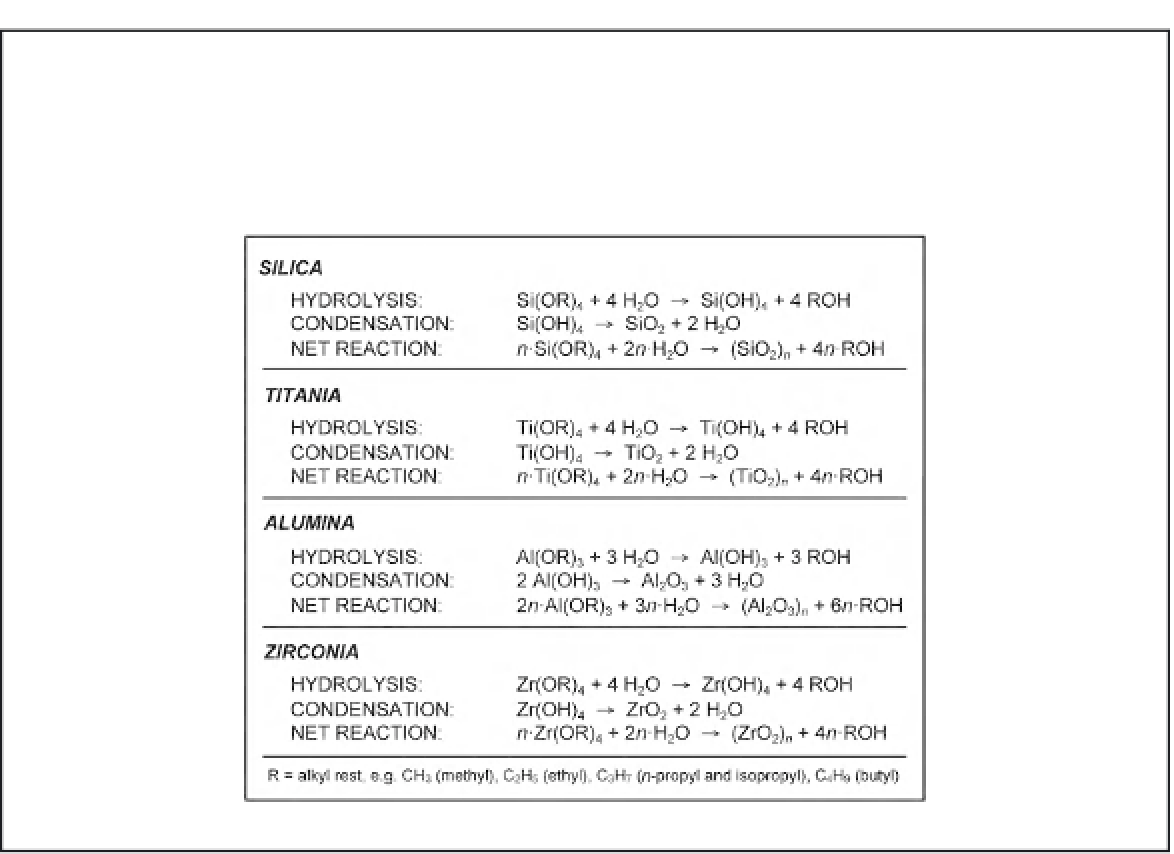Biomedical Engineering Reference
In-Depth Information
BOX 14.1
HYDROLYSIS, CONDENSATION, AND NET
REACTION FOR THE MOST COMMON SOL-GEL
OXIDE COMPOUNDS.
These reaction pathways are identical for
different sol-gel compounds as shown in
Box 14.1. The rates of both hydrolysis and
condensation reactions, however, depend strongly
on the type of metal alkoxides used, pH of the
precursor solution, temperature, presence of
solvents (mainly alcohols), and reactant
concentrations. Although most titanium-alkoxide
precursors react readily with water (titanium
tetraethoxide, for example, rapidly hydrolyzes in
a strongly exothermic reaction at room
temperature), the reaction of silicon alkoxides is
much slower (several minutes to hours) and
requires the presence of acid or base catalysts to
proceed at room temperature.
Initially formed dimeric species (products in
reactions
14.3 and 14.4
), then undergo repeated
oxolation and/or alcoxolation reactions, creating
nanometer-sized colloidal particles composed of
randomly cross-linked (-O)
x
−
1
-M-O-M-(O-)
x
−
1
species and unreacted hydroxyl residues (
Figure
14.7
a). During the subsequent gelation (or aging)
process, these nanoparticles can form larger
agglomerates by reaction of their residual
hydroxyl groups (
Figure 14.7
b). In subsequent
condensation reactions, these agglomerates then
transform into a fully interconnected, three-
dimensional network (
Figure 14.7
c). Since these
agglomeration and polymerization processes
occur in random fashion, the formed network
generally lacks long-range order and has glass-
like properties.
Control of the kinetics of gelation of the initial
sol particles is of foremost importance for


